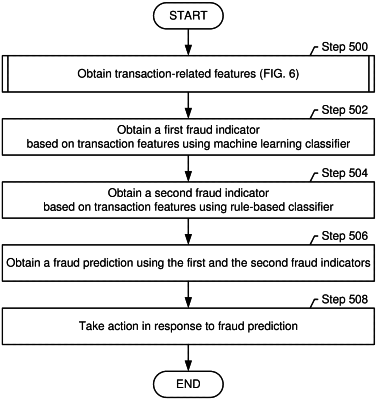| CPC G06Q 20/4016 (2013.01) [G06F 18/24317 (2023.01); G06F 21/52 (2013.01); G06N 20/00 (2019.01)] | 19 Claims |

|
1. A method comprising:
obtaining a plurality of features associated with a financial transaction conducted by an unknown transaction party over an information technology network;
generating a feature vector from the plurality of features;
computing a first fraud indicator using a machine learning classifier operating on the feature vector;
computing, responsive to the first fraud indicator indicating that the financial transaction is fraudulent, a second fraud indicator using a rule-based classifier operating on the plurality of features;
generating a fraud prediction that the financial transaction is fraudulent only when both the first fraud indicator and the second fraud indicator predict that the financial transaction is fraudulent;
taking an action, in response to the fraud prediction; and
prior to the computing of the first fraud indicator, training the machine learning classifier,
the training comprising:
retrieving, from a transaction database, a plurality of historical labels and a plurality of historical features associated with a plurality of historical transactions, wherein a subset of the plurality of historical labels indicate that an associated subset of the plurality of historical transactions are fraudulent, and
using a loss function for the machine learning classifier, minimizing a prediction error of the machine learning classifier being trained on the plurality of historical features and the plurality of historical labels.
|